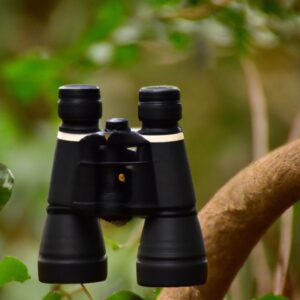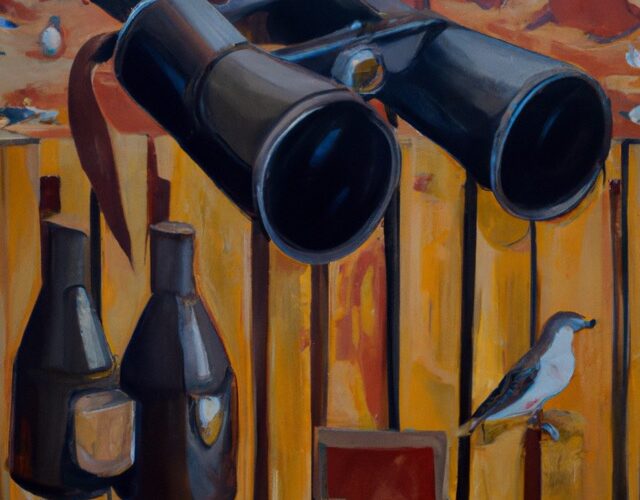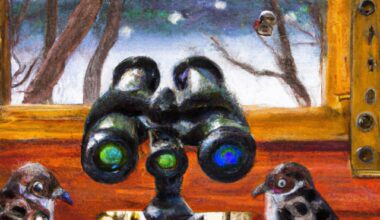Bird watching, also referred to as birding, is a popular hobby for nature enthusiasts of all ages. It involves observing, studying, and enjoying birds in the outdoors. Bird watching clubs have grown increasingly popular due to recent advances in technology and birdwatching equipment, making it easier than ever to get started.
Whether you’re a beginner or an experienced birdwatcher, there are many ways to join bird watching clubs and observe birds. From providing bird seed to your backyard feeders to taking hikes in natural parks to look for certain species, there are countless ways to fulfill your interest in bird watching.
In today’s article, you’ll discover the best parts about bird watching and how it can be done anywhere – in your own backyard, your local park, the beach, woods, fields, and more. The possibilities are endless! There’s no better way to get in touch with nature and wildlife than by getting out and observing birds in their natural habitats.
Optimal Equipment For Bird Watching
Bird watching is a hobby that requires the right equipment in order to enjoy the experience. To make sure that you get the most out of birding, it’s important to have the right tools for the job. Here are some of the most essential pieces of equipment that you will need when getting into bird watching.
- Binoculars: Binoculars are essential for bird watching as they allow you to see birds close up and in detail. Look for binoculars with a magnification of 8x or higher, as well as crisp optics. They should also be lightweight and comfortable to hold.
- Telescopes: Telescopes are good for observing birds from a greater distance and can usually achieve higher magnifications than binoculars. It’s important to have a sturdy tripod for your telescope to provide stability.
- Field Guides: Field guides are an invaluable resource for identifying birds. Make sure to choose one that covers the local area and is easy to use. A good guide should have detailed descriptions, photographs, and maps of the local bird species.

In addition to the items listed above, there are other pieces of equipment that can enhance your bird watching experience. Some of these include a notebook for recording observations, a hat or hoodie to protect against the sun, and snacks and drinks to keep you fueled up while you watch.
Benefits of Joining a Bird Watching Club
Joining a bird watching club can open up a world of opportunities to the avid birdwatcher. Here are the top three benefits of joining such cool associations:
1. Knowledge & Experience
By joining a club, you can benefit from the knowledge and experience of other members who have been watching birds for many years. With access to resources such as guidebooks, maps, telescopes, and supplies, your passion for birdwatching can only expand.
As an excellent source of knowledge and advice for beginners, experienced bird watchers are always more than willing to offer their tips and tricks. With these tips, you can enhance your viewing experience and increase your ability to recognize different species.
2. Meet Like-Minded Folks
Clubs are also a great way to meet like-minded individuals and build relationships with those passionate about birdwatching.
3. Find the Best Spots
Perhaps the greatest benefit of joining a club is the access to the most ideal locations for birdwatching. Experienced members of the club can guide newer members to the best spots for birdwatching in the area, so you can get the most out of your time outdoors.
Locations To Find A Bird Watching Club
Whether you’re just getting started or are looking to join an established bird watching club, it’s important to know where to look. Bird watching clubs can be found in many different locations and come in a variety of sizes, making it easy to find one that is perfect for you.
The best place to start is by searching online for clubs in your area. Many clubs have a website or social media presence that will provide details about membership fees, benefits, meeting times, and more. You can also consult local directories, such as the Yellow Pages, to find clubs listed in your area.
If there aren’t any clubs listed or if you want to meet others with similar interests, consider joining an online forum or social network specifically for bird watchers. These sites are great resources for finding clubs and networking with experienced watchers. Some of these groups may also have field trips or special events for members.
Finally, don’t forget to talk to friends and family who may already be involved with a bird watching club. They can provide valuable insight into the club and what it’s like to be a part of it.
Finding the right bird watching club can be a challenge, but with a little bit of research and the right resources, you’ll be able to join the perfect club for you in no time!
Considering Different Clubs
When deciding on a bird watching club to join, there are a few things to take into consideration. Before signing up for a membership, you’ll want to look into what kind of fees the club charges, what kind of requirements they have for their members, and the benefits of joining the club.
Membership fees may vary from one club to another and depend on a variety of factors such as the size of the club, the types of activities the club organizes, etc.
Be sure to research the club beforehand to make sure that the fees are affordable and that the club offers the type of opportunities you’re looking for.
In addition to fees, clubs may also require members to meet certain criteria before joining. Again, these may vary from one club to another, but may include things like proving bird identification skills or having certain levels of experience in the practice.
It is important to inquire about this when looking at potential clubs.
One of the major perks of joining a bird watching club is the ability to benefit from the experience of other club members. Clubs can provide access to resources, events, and tips and tricks from experienced bird watchers.
This can be invaluable in improving your bird watching skills and making the most of your time in the field.
Proper Care Of Birds
It is important to take proper care when observing birds while bird watching. We must remember that they are living creatures, and we need to respect their space and privacy.
There are some basic rules of safety, etiquette, and precautions that should be followed to ensure the safety and well-being of birds.
- Always remain at a safe distance from birds and avoid getting too close so as not to disturb them.
- Never touch or attempt to pick up birds, as this can cause stress and damage to them.
- Be aware of local regulations and laws in regard to protected birds and habitats.
- Choose appropriate clothing and eyewear that won’t scare away birds.
- Be mindful when taking photos or videos to not disturb birds.
- Be aware of the potential for other dangers such as predators that may threaten the birds.
- Respect private property and do not trespass.
- Avoid using products such as insect repellents that can harm birds.
- Be considerate of other bird watchers and always act responsibly.
By following these basic safety rules and etiquette, you will be able to observe and appreciate birds in a safe and respectful manner.
Bird Identification
Identifying birds can be tricky! Knowing the right techniques and methods makes it easier to learn more about the amazing creatures we find in nature. In birdwatching, you can use unique features like plumage, behavior, and vocalizations to help with identification.
Plumage is the feathers of a bird, and a key identifier. Different birds have different feather patterns, colors, and combinations that can help to tell them apart. For example, many songbirds have bright colorful patches on their wings and tails or stripes across their breast.
Just like people, birds also have certain behaviors that can give away what species they are. Looking for a bird’s behavior can also help with identification. Birds can be found perching, flying, eating, nesting, preening, and more. Each species will do these tasks in a slightly different way, like how different birds tend to prefer different perches.
Another identifier is birds’ vocalizations. Each species has its own songs and calls that can help you to identify them. Knowing the tones and even dialects of a bird’s signature sounds can help to identify various species of birds in an area.
With a little practice and observation, you can start learning these techniques to help you identify the birds you see in the wild. A good way to practice is by joining a birdwatching club and going out on guided walks with experienced watchers who can help you learn more about identifying and appreciating birds!
How To Start Your Own Club
Starting your own bird watching club is a great way to connect with other like-minded bird watchers, access local sighting information, and get out and explore new places. Before you can begin, however, you’ll need to do some research, make a plan, and put the wheels in motion.
Research
Start by researching existing clubs in your local community, as well as any national or international clubs that might be available to join. Research their structure, membership benefits, and rules and regulations to get an idea of what it takes to run a successful club.
Try to determine what kind of bird watchers are in the area and take note of how other clubs operate to help inform your own model.
Make a Plan
Once you’ve done your research, you need to make a plan. Start by thinking about the purpose of your club; what kind of activities will you offer, who should join, and what kind of membership fees or donations you’ll require.
You’ll need to decide on a name for the club, create a logo, and write a mission statement strongly expressing the goals of your organization. Draft up an agreement outlining the expected behavior of all members in order to ensure a safe and respectful environment.
Gather Resources
You’ll also need to obtain resources for your club, such as field guides, binoculars, and telescopes. You may need to invest in a domain name, web hosting, and basic marketing materials like business cards.
Depending on your budget, consider reaching out to sponsorships or grants to help fund the club’s initial costs.
Promote & Recruit
Promote your new club by advertising in local newspapers and magazines, on social media, and even in store windows. Reach out to friends, family, colleagues, and anyone else you think might be interested in joining.
Contact existing clubs to share resources and network, as this may lead to more members joining your group. Lastly, consider offering something unique that other clubs don’t, like a special members’ night of bird watching.
Organize Meetings & Events
Once you have gathered your resources and recruited members, you can start organizing meetings and events. Have regular check-ins for members, take trips for field-based bird watching, host lectures and seminars, and even have competitions to identify different species of birds.
This is not only a great way to connect people and share information, but also to keep members engaged and interested in the club.
Creating your own bird watching club can be a rewarding experience, and a great way to build relationships with those who share your passion. With some dedication, research, and effort, you can successfully launch and run your own bird watching club!
Conclusion
Joining a bird watching club can bring many beneficial aspects to the hobby, such as access to resources, advice from experienced watchers, and knowledge about different bird species.
To find a bird watching club, consider local nature centers or wildlife sanctuaries, and investigate what type of membership or fees may be associated with them. It’s important to stay safe when birding, by always following proper protocol and etiquette for the sake of the birds’ well-being.
Additionally, it’s important to accurately identify birds and understand their behaviors. If you’re considering starting your own bird watching club, make sure to do your research and become knowledgeable about the hobby so you can provide a productive and welcoming environment for others.
FAQs on Bird Watching Club
What is a bird watching club?
A bird watching club is a group of people who share the same interest in birds and birding. These clubs organize field trips, conduct bird censuses like the Christmas bird count, and share information through newsletters and online platforms.
Why join a bird watching club?
Joining a birding club is an excellent way to meet other birders who share your passion for bird watching. You can learn from experienced birders, improve your birding skills, and discover new bird habitats. It’s also a great way to get involved in bird conservation efforts and contribute to the work of organizations like the Audubon Society and the Maryland Ornithological Society.
How can I find a bird watching club near me?
You can search for birding clubs in your area online or through birding organizations like the Audubon Society and the Carolina Bird Club. These clubs often have websites or social media pages where you can find information about their activities and how to join.
Who can join a bird watching club?
Anyone with an interest in birds can join a bird watching club. Most clubs welcome anyone regardless of their age or level of experience. Young birders are especially encouraged to join and learn from experienced birders.
What is a bird watching club?
A bird watching club is an organization that brings together individuals who share an interest in birds and birding. They typically organize field trips, educational programs, and conservation efforts.
What is birding?
Birding is the activity of observing and identifying birds in their natural habitat. Bird watchers, also known as birders, use binoculars, field guides, and other tools to help them identify different bird species.
What is a field trip?
A field trip is an excursion made by a group of people, typically for educational or recreational purposes. In the context of bird watching clubs, field trips are organized outings to different birding sites to observe and identify birds.
What is a birder?
A birder is an individual who actively watches and studies birds. They may belong to a bird watching club or participate in birding on their own.
What are the benefits of joining a bird watching club?
Joining a bird watching club has several benefits. You get to connect with other birders and learn from their experiences. You get access to organized field trips and educational programs. You can also contribute to bird conservation efforts through the club’s activities.
What is the Audubon Society?
The Audubon Society is a non-profit organization dedicated to bird conservation. They work to protect and restore bird habitats, and also organize various birding activities and events.
What is the Christmas Bird Count?
The Christmas Bird Count is an annual event organized by the Audubon Society. It involves birders across North America counting the number of birds in their designated areas on a specific day in December, to track changes in bird populations over time.
What is a newsletter?
A newsletter is a publication typically sent out to members of an organization or community. In the context of bird watching clubs, newsletters typically contain information about upcoming events, birding tips, and recent bird sightings.
What is a nature center?
A nature center is a facility that promotes nature education and conservation. They typically have exhibits about local flora and fauna, as well as educational programs and events.
Is the bird club a non-profit organization?
Yes, many bird clubs are non-profit organizations dedicated to bird conservation and education.


